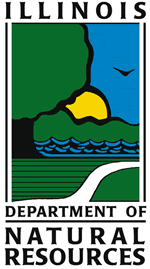Illinois DNR Reports Epizootic Hemorrhagic Disease Outbreak in at Least 51 Illinois Counties

An ongoing outbreak of Epizootic Hemorrhagic Disease (EHD) in white-tailed deer in Illinois has resulted in reports from concerned citizens of more than 700 deer mortalities in 51 counties through August, according to data compiled by the Illinois Department of Natural Resources (IDNR).
EHD is a viral disease, spread by tiny biting gnats, which can cause high fever and severe internal bleeding in deer. While often fatal in deer, EHD is not hazardous to humans, livestock or pets. EHD is related to, but not the same as “blue tongue,” which affects sheep and cattle. Domestic animals can be infected but rarely develop serious illness, according to the Illinois Department of Agriculture.
Symptoms of EHD in deer may include sluggishness, difficulty breathing, loss of appetite, salivation, a high fever and swelling of the head, neck, tongue or eyelids. Infected animals will seek water and are often found close to ponds, lakes and creeks.
EHD is nothing new. The disease was first identified in 1955 in Michigan and New Jersey. Although EHD probably affects some Illinois deer every year, it is difficult to predict the extent and intensity of the disease. In 2011, the IDNR received probable EHD reports from eight Illinois counties. The last major outbreak occurred in 2007, during another very dry summer, when EHD was reported from 57 counties.
Early reports this summer began to surface during July, primarily from the southern half of the state. Through the end of August, IDNR biologists had logged reports of 721 dead deer from 51 counties (see map below). The highest numbers of EHD-related deer mortality have come from Cook (256), Macon (69) and Calhoun (59) counties. Laboratory testing has confirmed the presence of EHD virus. The outbreak is not confined to Illinois, with EHD outbreaks also reported in neighboring Indiana, Kentucky, Iowa, and Missouri.
“Problems related to EHD can become more pronounced during drought years,” said Tom Micetich, IDNR Deer Project Manager. “Exposed mudflats provide conditions that favor hatches of the disease-carrying insects. Later in the summer, deer become more concentrated around the limited water sources, and the disease may begin to spread more quickly. Mild winters may also contribute, resulting in higher gnat populations the following summer.
“Typically, outbreaks tend to be localized with a very patchy distribution across the landscape,” Micetich added. “This occurs because environmental and habitat conditions play an important role in producing just the right mix of virus, high gnat populations, and susceptible deer. Heavy losses may occur in a particular area, while adjacent properties may be virtually unaffected. While deer may be dying on your property, your neighbor may not find any.”
Contrary to rumors, EHD kills both bucks and does. However, the timing of outbreaks occurs while deer are segregated – with doe/fawn groups and bachelor buck groups not mixing much during summer months. When one animal becomes infected, it is easier for the remaining members of the group to be exposed.
Hunters and landowners who find sick or dead deer that they suspect may be related to EHD, especially in or near water, are asked to contact their nearest IDNR field office or regional office to report them. Discoveries of EHD-related deer mortality may also be reported to Tom Micetich at 309-543-3316, ext. 231; or email: tom.micetich@illinois.gov. Anyone reporting dead deer should include their name and contact phone number, as well as the county, number of dead deer, and specific location of the deer (distance/direction from the nearest town).
There is no effective management treatment for this disease. An insect-killing frost typically ends an EHD outbreak.
“That would be one more reason to hope for cooler weather, soon,” said Micetich.

